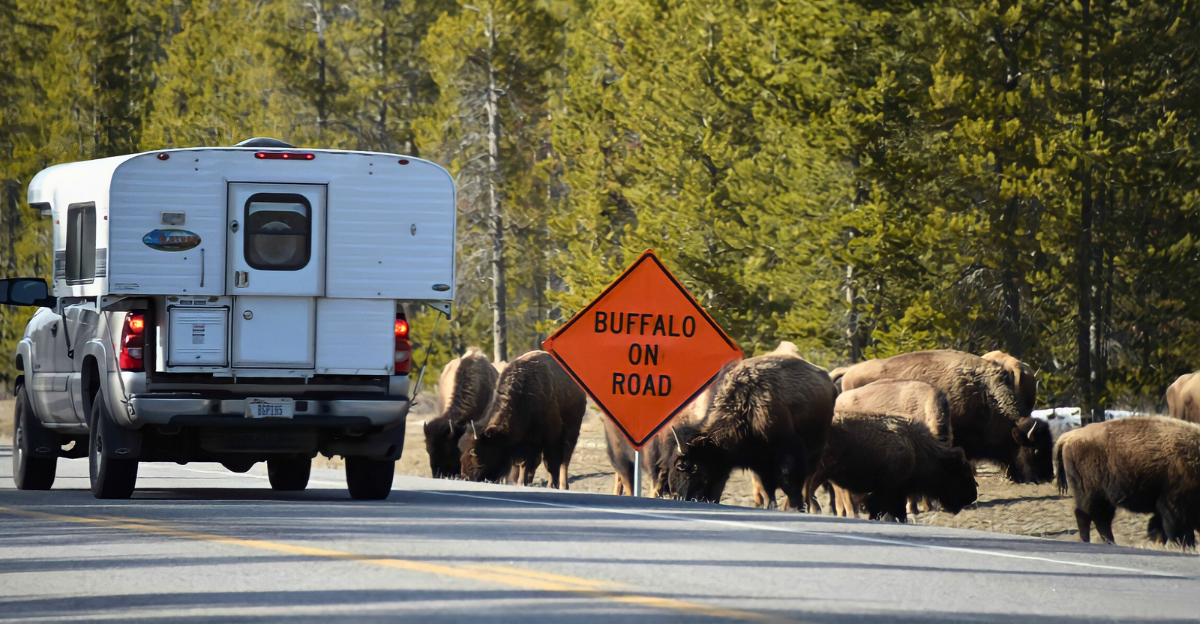
Yellowstone National Park is one of the most remarkable wildlife sanctuaries in the world, teeming with an extraordinary variety of animal life and untouched natural habitats. The park boasts the richest concentration of large mammals, with nearly 300 species of birds and 67 species of mammals, along with fish, amphibians, and reptiles.
If you’re looking to have the experience of a lifetime and see some remarkable creatures, you might want to plan your next road trip. These are some of the incredible animals you can spot along the way.
1. Black Bear
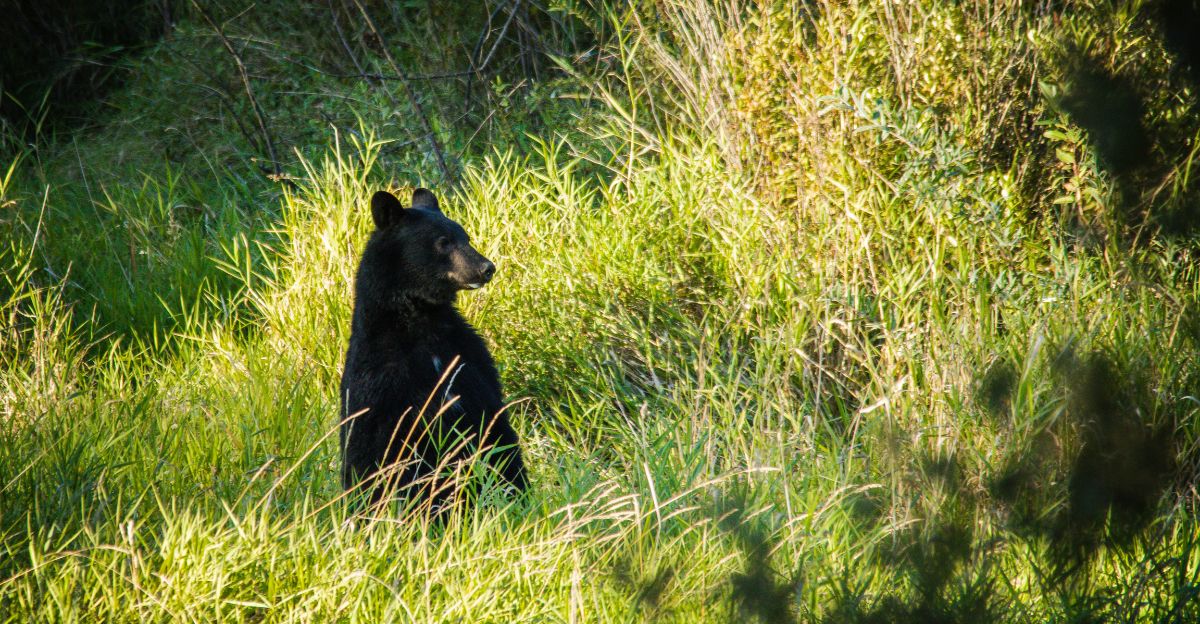
These remarkable bears can often be found in forested areas and the edges of clearings, where they find protection, food, and opportunities to climb trees. Their short, curved claws make them exceptional climbers, allowing them to reach high for mast and fruits. They also snack on insects and small mammals, demonstrating remarkable adaptability in their feeding habits.
Black bears are active foragers in lower elevations and along roadsides in spring and early summer, searching for fresh food sources as higher areas remain snow-covered. Black bears prepare for hibernation as autumn approaches by rapidly accumulating body fat. They dig dens at the base of trees or on north-facing slopes for insulation, where they hibernate through winter.
2. Moose
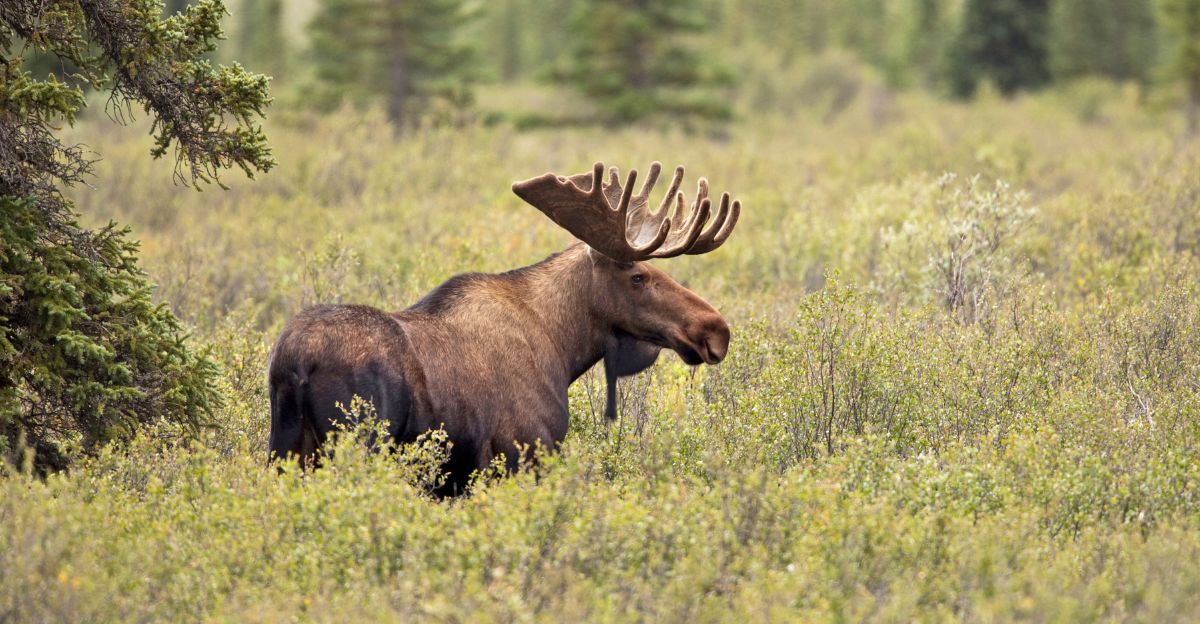
Moose are the largest members of the deer family and display powerful adaptations suited to Yellowstone’s rugged landscape. With long legs designed for wading through rivers, marshes, and deep snow, moose can access aquatic plants in wetlands during summer and traverse snowy areas in winter, making them expert swimmers and remarkable runners.
In summer, moose primarily feed on water lilies, duckweed, and especially the leaves and twigs of willow, consuming up to 50 pounds of food per day. During winter, their diet shifts mainly to woody browse, with food intake dropping to about 10–12 pounds daily as the digestion of woody material takes longer.
3. Pronghorn
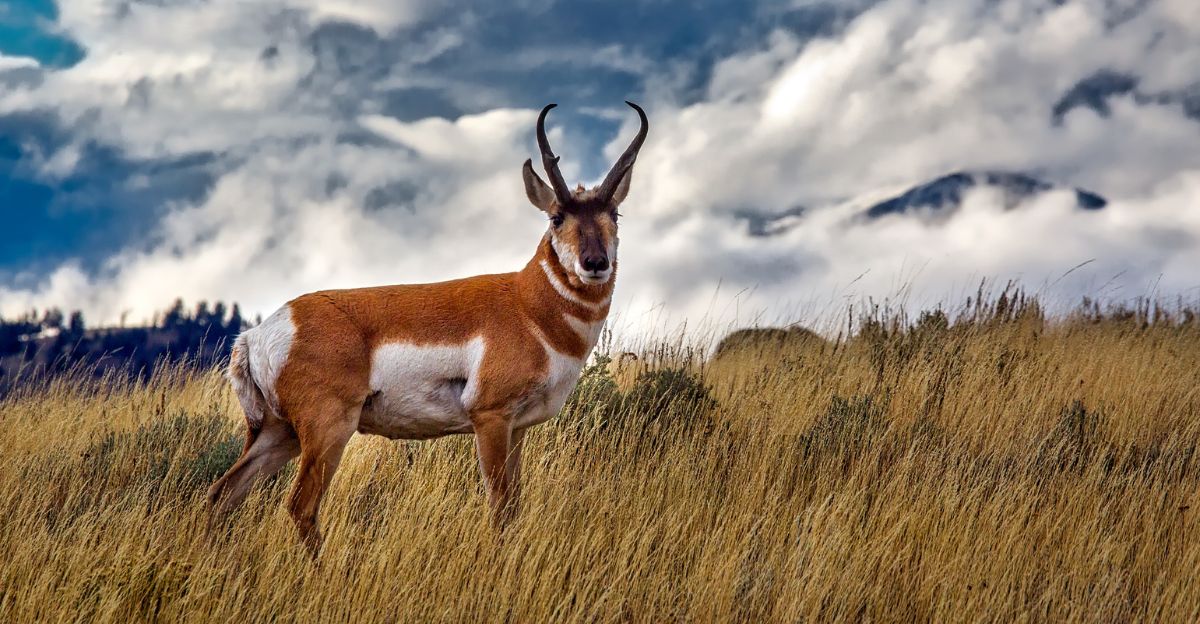
They can often be found in habitats with wide, unobstructed views and low vegetation, which allow them to spot predators from a distance and rely on their incredible running ability to evade danger—pronghorns can reach speeds of up to 55 mph, making them the fastest land mammals in North America.
In Yellowstone, pronghorns participate in seasonal migrations, with about three-quarters of the population traveling between winter and summer ranges to take advantage of changing forage quality and availability.
4. Canada Lynx
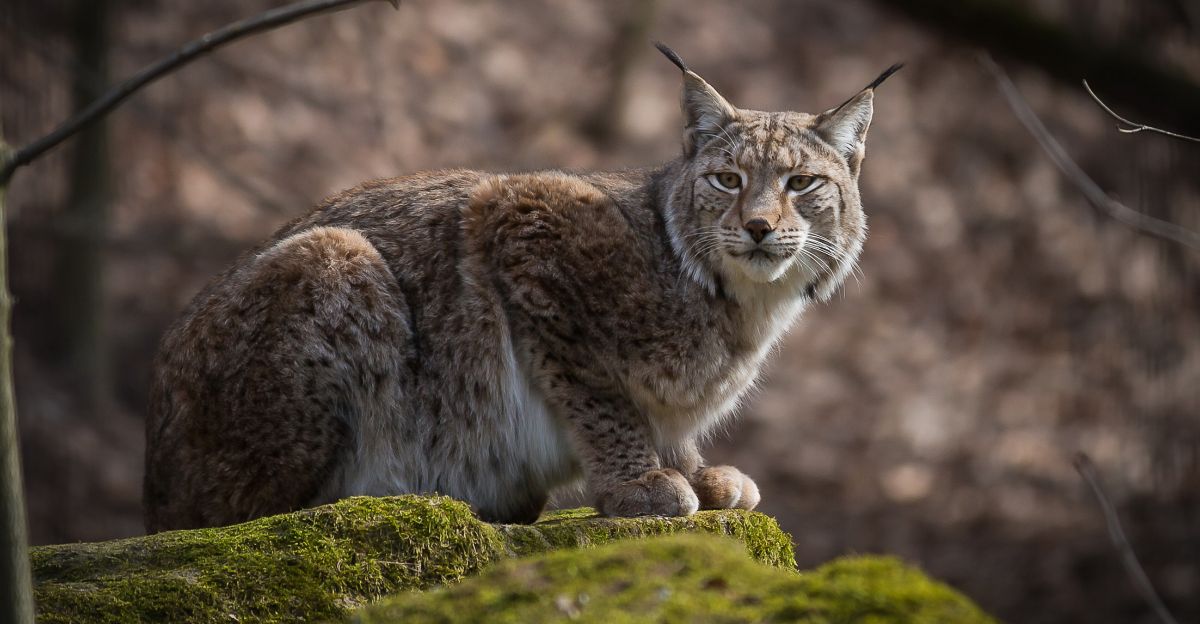
The Canada lynx is a secretive and solitary feline that inhabits Yellowstone’s high-elevation conifer forests, generally above 7,700 feet, where its primary prey, the snowshoe hare, lives. Yellowstone’s lynx population remains sparse due to naturally patchy habitat created by periodic wildfires, which leads to limited areas suitable for shelter and hunting.
Canada lynx are mostly nocturnal, relying on keen hearing and vision to ambush prey, especially along well-worn hare trails. Their snowshoe-like paws enable easy travel across deep snow, giving them a distinct advantage over other predators in winter.
5. River Otter
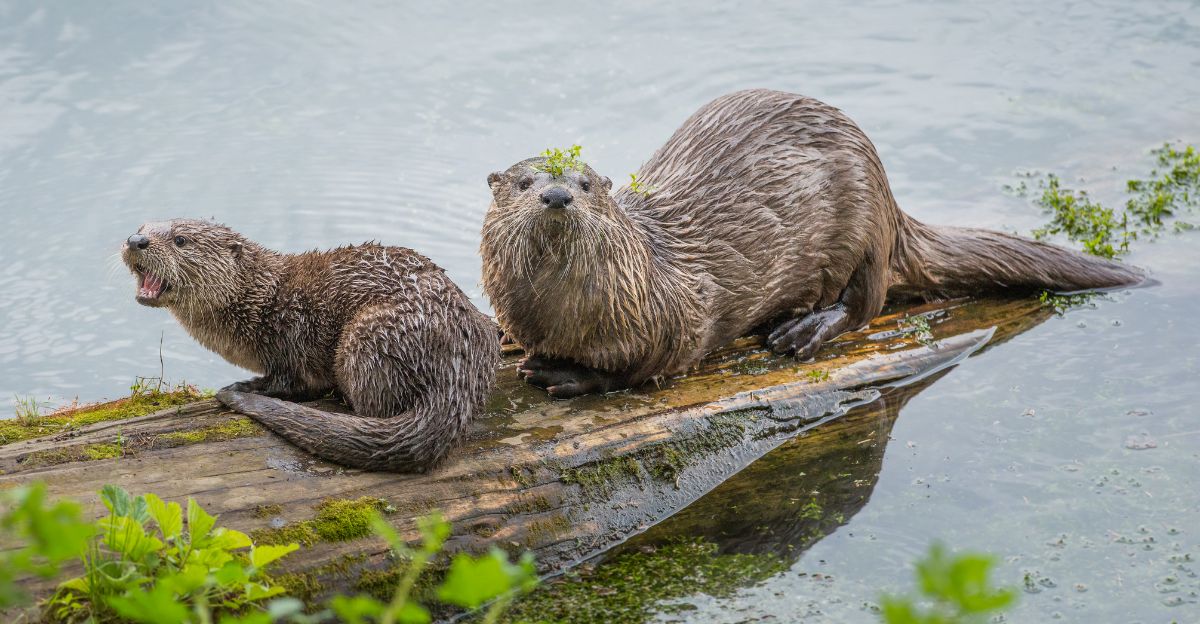
These cute little critters typically weigh between 10 and 30 pounds and can grow up to four feet long, sporting a thick, water-repellent coat that enables them to thrive even in Yellowstone’s frigid winters. Otters are primarily active at dawn and dusk, spending daylight hours inside their dens. Their varied diet includes fish, crayfish, frogs, and occasionally young muskrats, with a preference for slow-moving prey that they bring to shore to eat.
In their aquatic habitat, river otters occupy a top position in the food chain, but once ashore, they’re vulnerable to predators like wolves, coyotes, foxes, and bobcats. They love entertaining and playing around, so keep your eye on them for a little while, as they might just surprise you.
6. American Bison
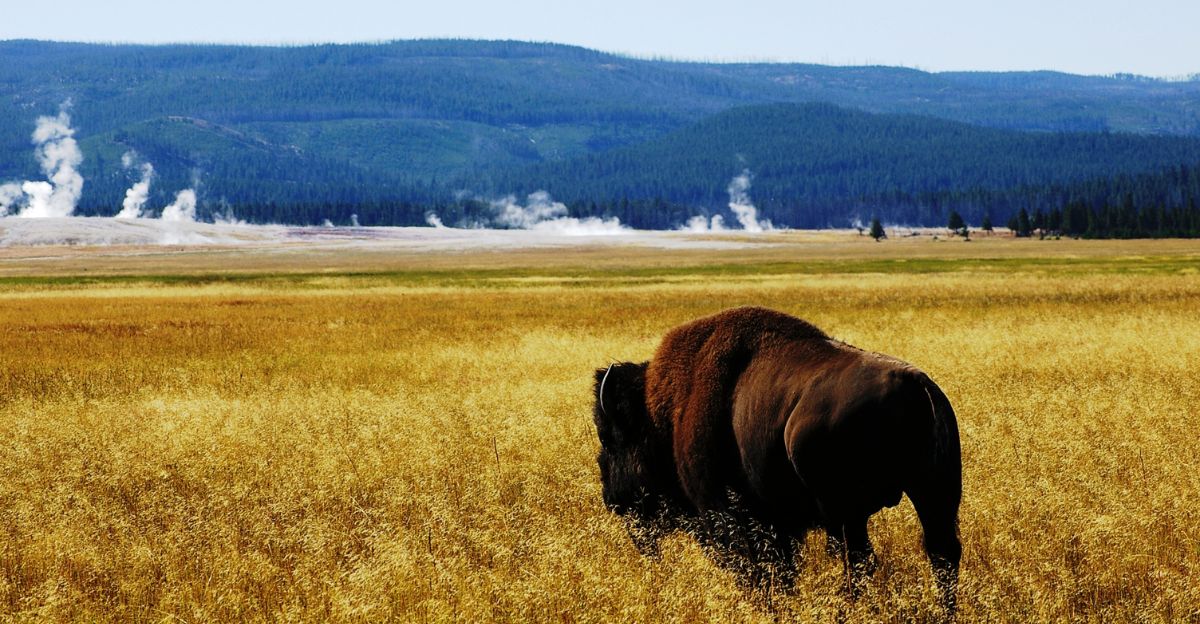
The American bison is an icon of Yellowstone National Park and the largest land mammal in North America. Males can reach up to 2,000 pounds, and females about 1,100 pounds. Bison are recognizable by their large shoulder hump, massive head, and thick brown fur, which insulates them against Yellowstone’s fierce winters.
Yellowstone is unique as the only place in the contiguous United States where bison have roamed continuously since prehistoric times. They survived mass slaughter in the late 1800s, when their numbers plummeted from 30 million to near extinction. Efforts to save the species included introducing new individuals in 1902, which helped rebuild a genetically diverse herd numbering over 4,800 animals.
7. Badger
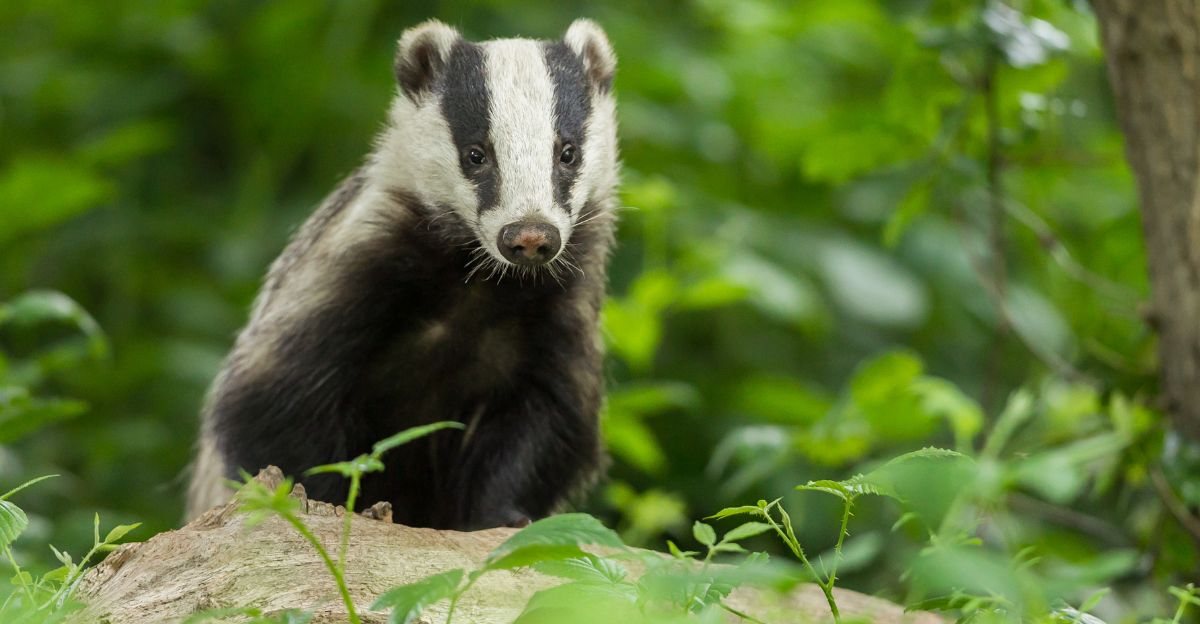
These little creatures thrive in open habitats, favoring the park’s sagebrush flats and grasslands where soft soils aid their subterranean lifestyle and prey is abundant. Their powerful, low-slung bodies are built for excavation, equipped with long claws, muscular necks, and facial adaptations.
Mostly solitary and nocturnal, badgers spend their nights patrolling territory and digging expansive dens called setts, which may contain multiple chambers and entrances. Badger dens not only shelter and protect their own young but also become vital microhabitats for other creatures and help aerate the soil, subtly shaping the landscape.
8. Sandhill Crane
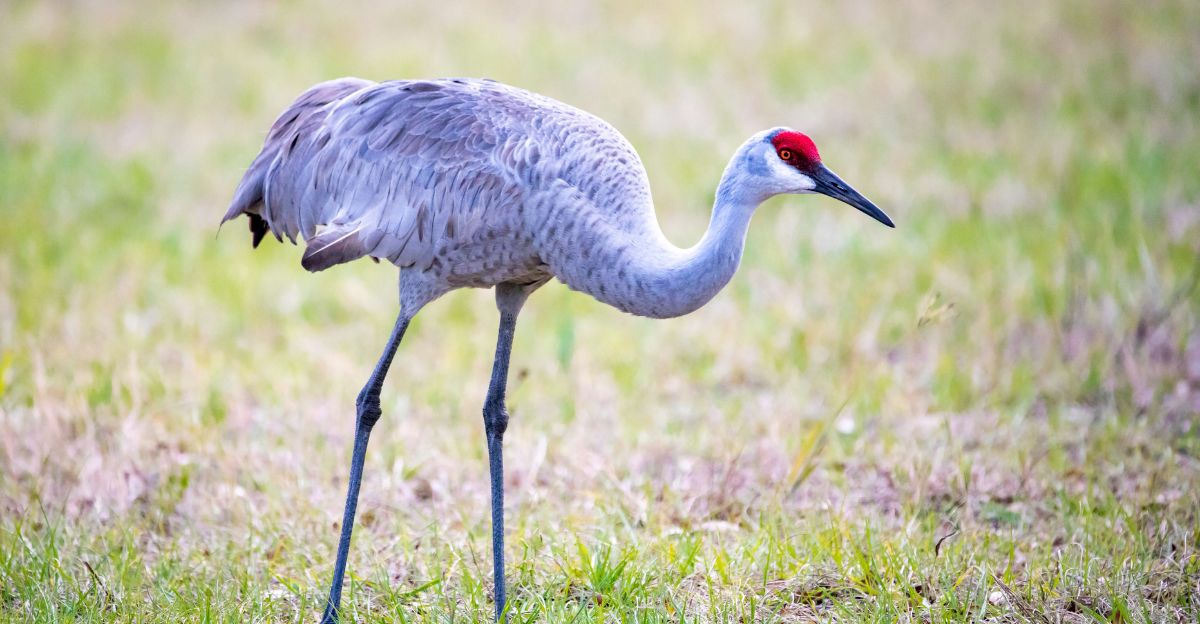
These cranes are most often seen from March to October, nesting in the park’s shallow marshes, wet meadows, and prairies. Their tall, gray bodies, long legs, and striking red crowns make them easy to spot. Mated pairs form lifelong bonds, engaging in elaborate courtship dances with leaps, bows, and trumpeting duets, which can be quite the sight in spring.
Every year, Sandhill Cranes return to Yellowstone after an arduous migration, some flying up to 200 miles per day to reach their nesting grounds. They generally lay one to two eggs per breeding season; both parents cooperate in incubation and raising of young, which grow rapidly, sometimes up to an inch per day. As fall draws near, families of Sandhill Cranes gather at staging areas, needing wetland night roosts close to grain fields to fuel their southbound journey.
9. Bobcat
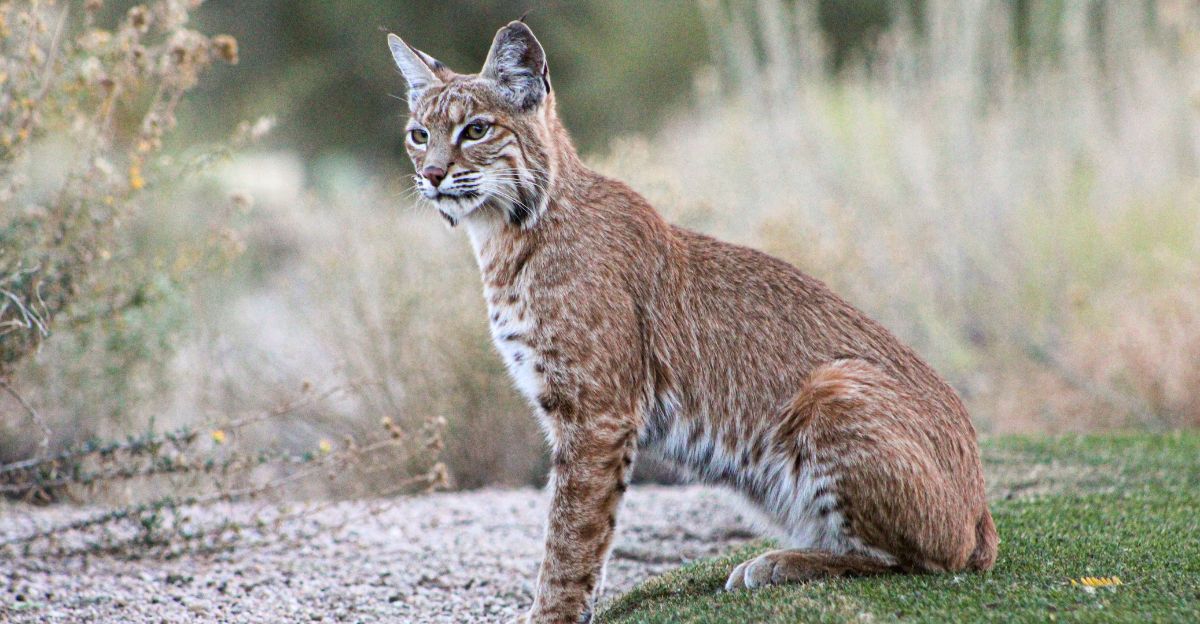
Bobcats are one of Yellowstone National Park’s most elusive predators, expertly navigating rocky areas and conifer forests along riverbanks where sightings are rare. Averaging 15–30 pounds and 31–34 inches in length, Yellowstone bobcats are crepuscular, meaning they are most active during dawn and dusk, when their prey is abundant.
Their hunting style is a blend of patience and power. They typically lie in wait near logjams or beaver lodges, ambushing birds and mammals with a powerful pounce that can cover up to fifteen feet.
10. Mountain Goat
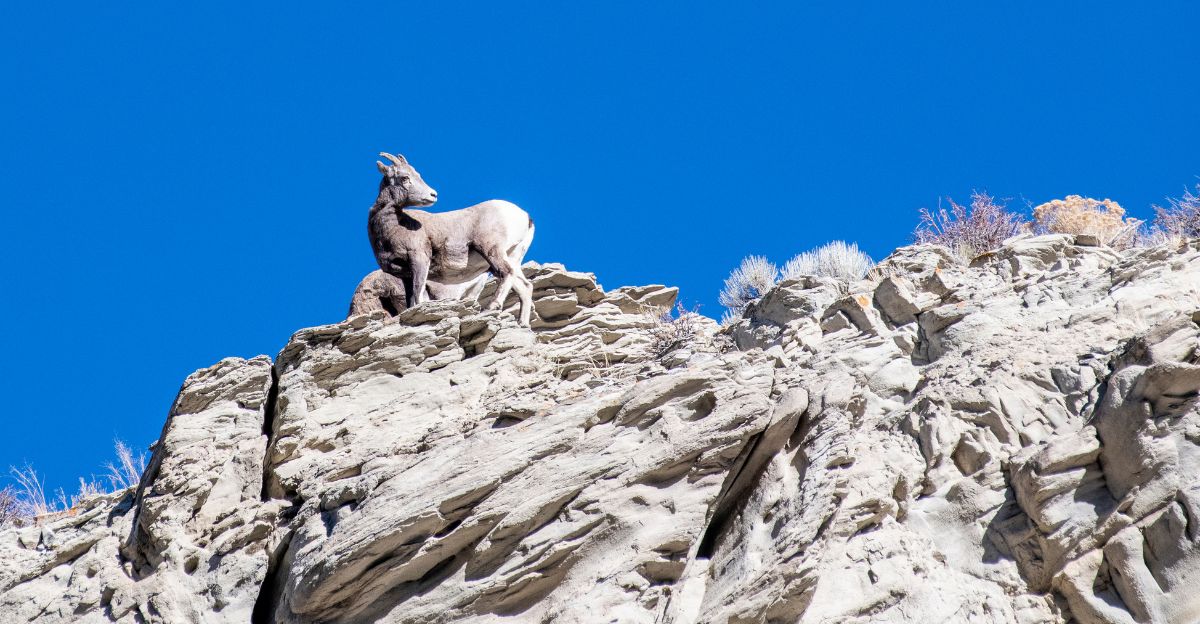
Mountain goats in Yellowstone are spectacular cliff-dwellers recognized for their unrivaled climbing prowess and ability to thrive year-round in harsh alpine environments. Though not native to the park, their populations have expanded in recent decades due to introductions in neighboring ranges for hunting purposes, and now hundreds are present in Yellowstone and Grand Teton National Parks.
They are well adapted to cold, snowy landscapes, remaining on exposed ridges and cliffs throughout winter while most other ungulates migrate to lower elevations. Their thick, white double-layered coats offer insulation against harsh winds, and their diet consists of the sparse alpine vegetation, including grasses, mosses, lichens, and woody plants found at high elevations.
11. Grizzly Bear
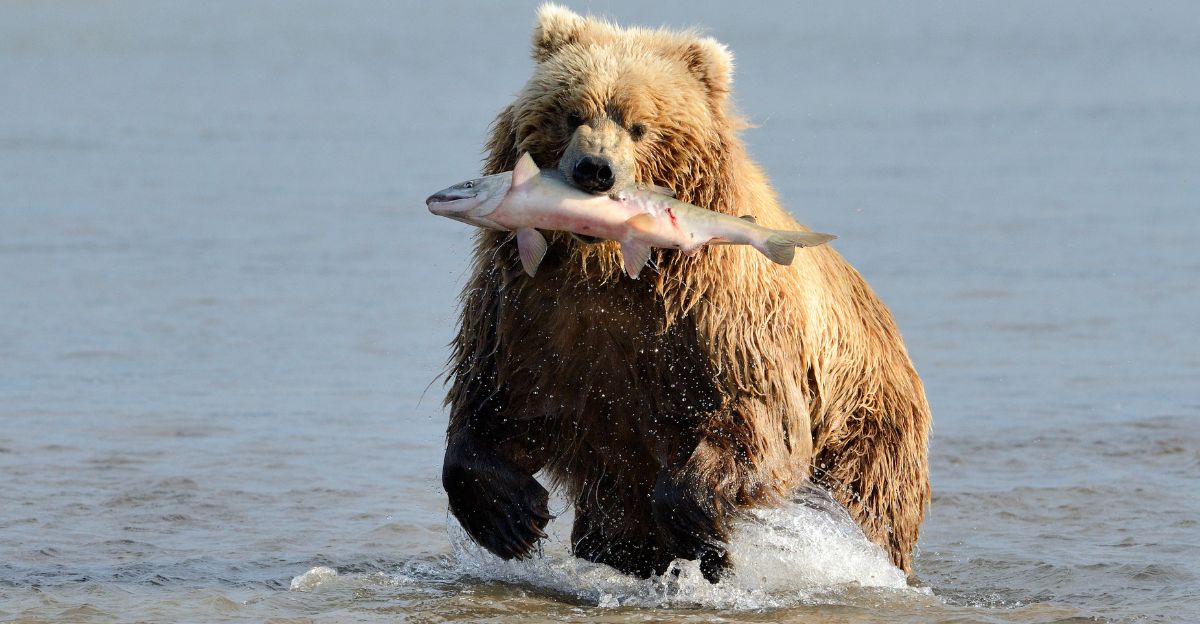
Adult males typically weigh between 300 and 700 pounds, with some reaching as much as 1,000 pounds, while females weigh 200 to 400 pounds. A defining feature is the muscular shoulder hump, which helps them dig for roots and grubs. Their long claws, up to four inches long, expertly excavate food and create dens.
Grizzly bears roam vast territories in Yellowstone, often traveling 20 to 40 miles per day in search of food, with males averaging home ranges of 600 to 1,000 square miles and females about 100 square miles.
12. Bighorn Sheep
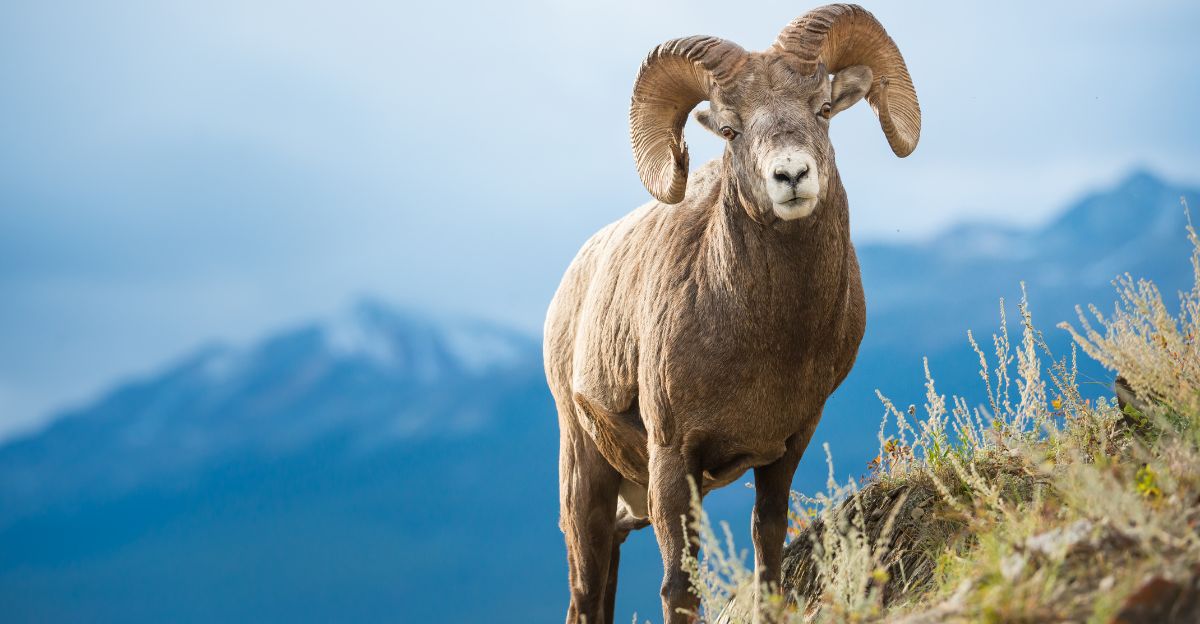
These agile animals are expert climbers, found on steep, rocky slopes and ledges where their specially adapted hooves provide extraordinary grip, sometimes perching on surfaces barely two inches wide. Most bighorn sheep in Yellowstone are migratory, spending winters in lower-elevation valleys along the Yellowstone, Lamar, and Gardner rivers, then moving to higher ground in summer.
Bighorn sheep are best known for the spectacular head-butting contests between males during fall mating season, where rams charge each other at speeds up to 20 mph, generating a sound that can echo over a mile.
13. Red Fox
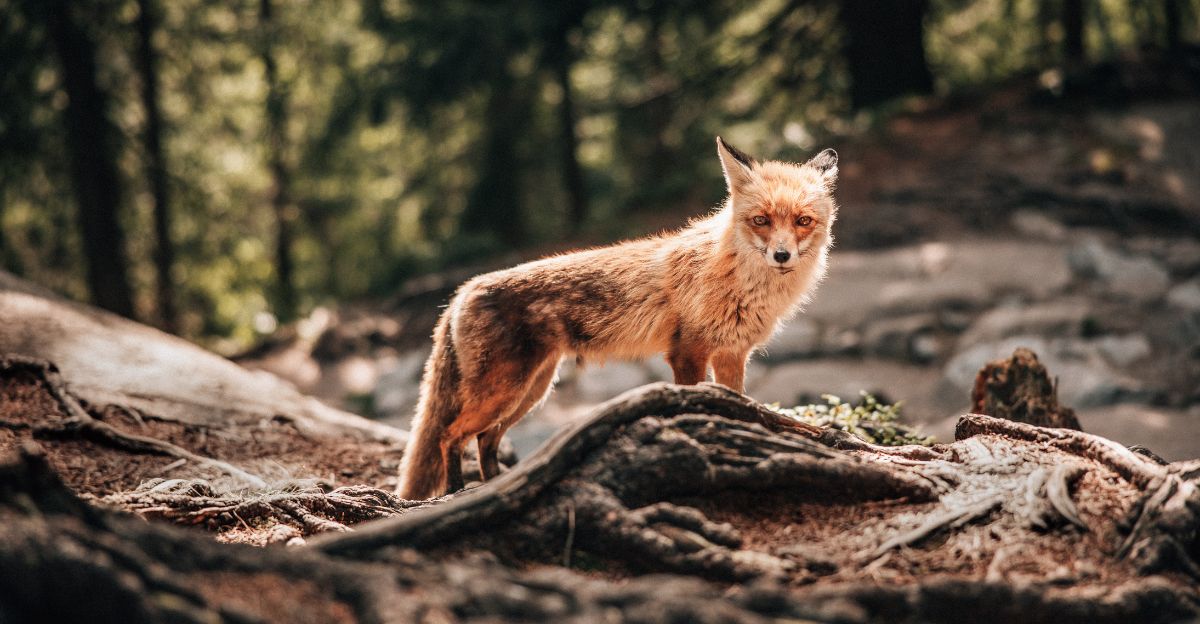
In Yellowstone, red fox populations are divided into two main groups separated by elevation: those above and those below 7,000 feet. Each group displays unique genetic and physical traits, such as cream-colored coats at higher elevations. Despite these differences, no clear geographical barriers prevent intermingling, yet the subpopulations remain largely distinct.
Their color ranges from deep red to lighter shades, yet they are easily identified by their black “socks,” white cheek patches, and bushy tails tipped in white. Their nocturnal and solitary nature makes direct sightings challenging, though they become more visible when feeding kits in spring or during winter dawn and dusk.
14. Bald Eagle
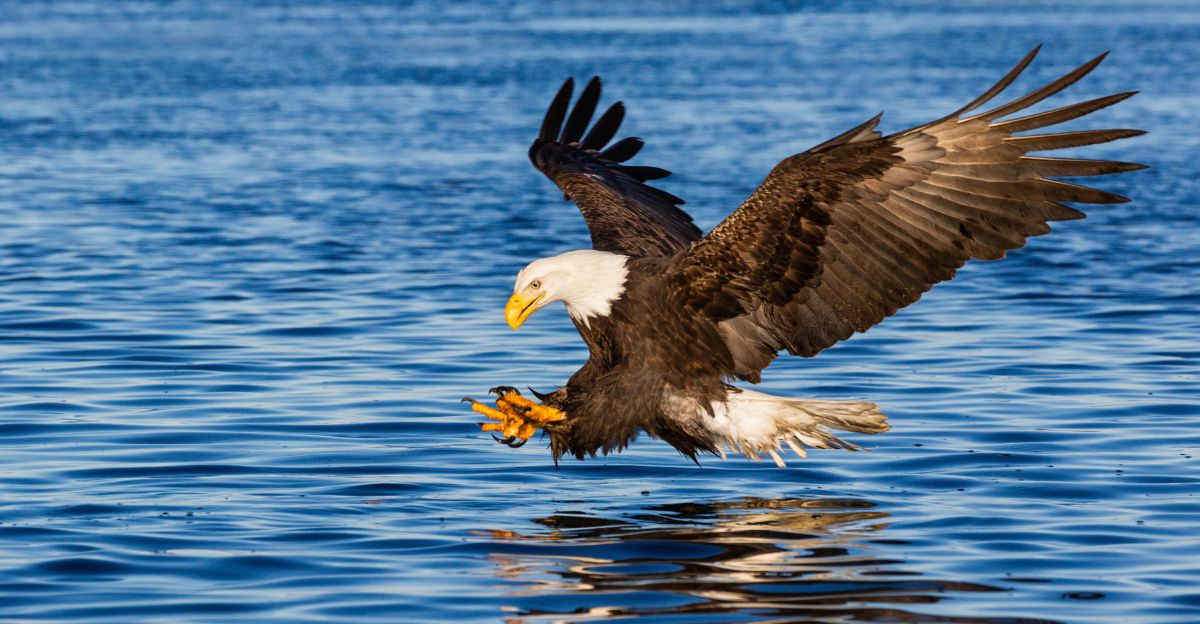
In Yellowstone, bald eagles nest along major rivers and lakes. They rely primarily on fish for food but also feed on waterfowl and carrion, especially during harsh winters when fish may be scarce. Their astonishing vision enables them to spot prey, such as fish, from hundreds of feet above the water or land prey the size of a rabbit from several miles away.
Most eagles in Yellowstone are year-round residents, but some juveniles migrate in autumn to coastal regions or lower valleys for better food access and milder climates. Nesting pairs fiercely defend their territories and will reuse the same nest sites for decades, a testament to their site fidelity.
15. Cougar
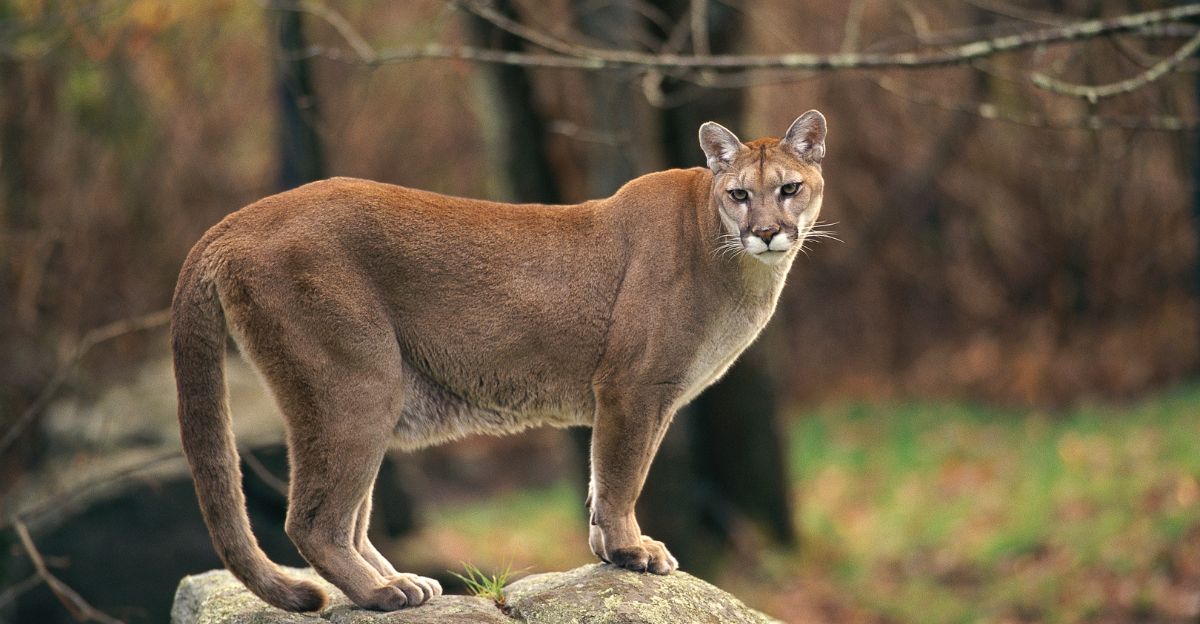
The cougar, also known as the mountain lion or puma, is one of Yellowstone’s most secretive and powerful predators. It thrives across the park’s rugged terrain and remote forests. Cougars’ presence is rarely detected, as they are masters of camouflage. They usually hunt and move at dusk or dawn to avoid detection by both prey and humans.
Adult males are highly territorial, often competing fiercely for a prime home range, which may overlap with several females’ territories. Most residents are actually immigrants from afar, maintaining healthy genetic diversity in the population by dispersing vast distances, sometimes up to 400 miles from their birthplace.
16. Barred (Western) Tiger Salamander
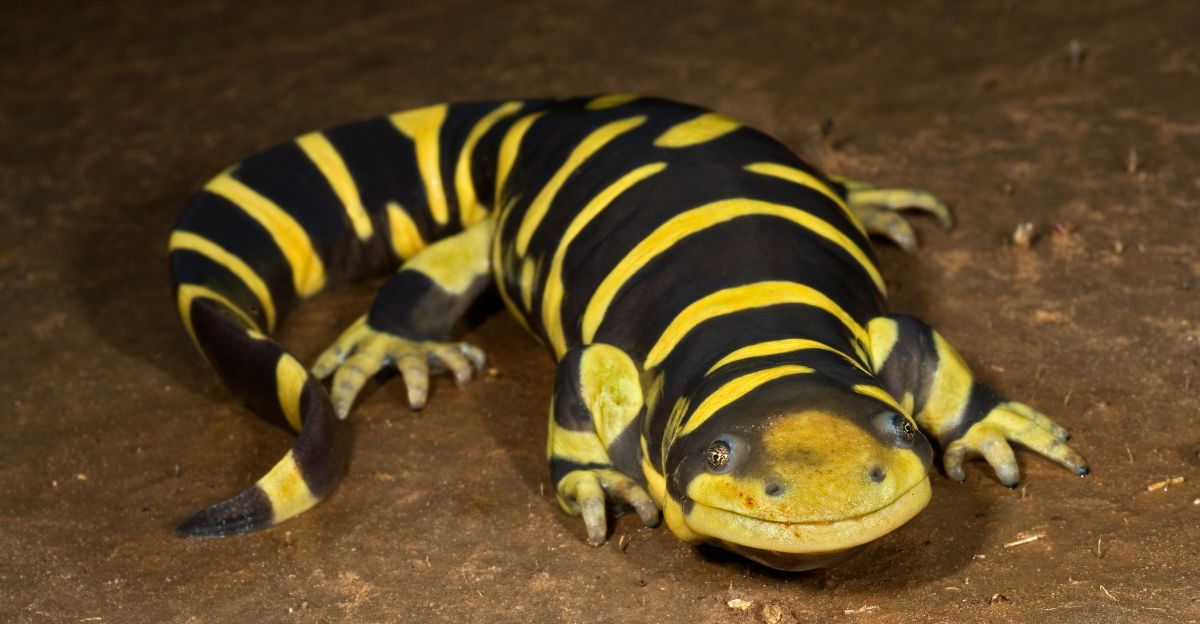
These intriguing amphibians are admired for their striking appearance and fascinating life cycle. Distinguished by dark bodies with bold yellow or gray bars, these salamanders can reach impressive lengths of up to 14 inches, making them one of North America’s longest terrestrial salamanders.
Adults spend most of their lives underground in burrows, emerging mainly at night to hunt insects, slugs, earthworms, and even occasionally other salamanders. Barred tiger salamanders thrive in a variety of habitats, from lowland woodlands and meadows to grasslands and semi-deserts. They are always near slow-moving or still water, which is essential for breeding and larval development.
17. Prairie Rattlesnake
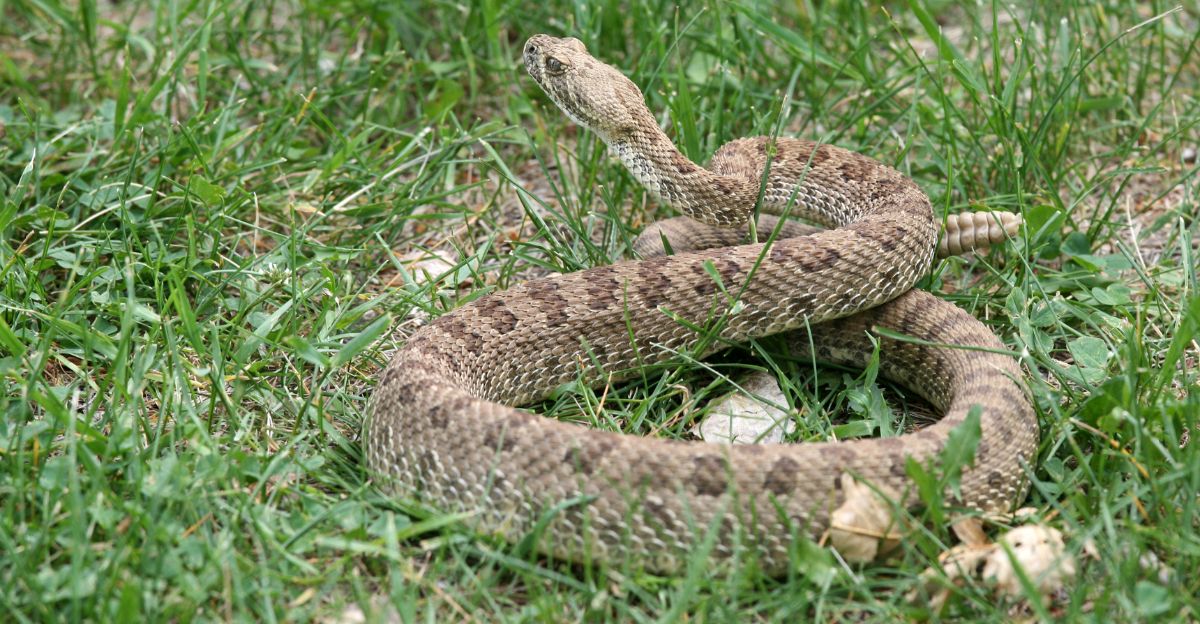
This is Yellowstone’s only dangerously venomous snake, thriving in the park’s warmer, drier habitats, such as the lower Yellowstone River Valley, Reese Creek, and Rattlesnake Butte. Prairie rattlesnakes are primarily terrestrial but will occasionally climb trees or rocks. They are active diurnally in cooler conditions and switch to nocturnal habits in hot weather.
These snakes are generally shy and use their distinct tail rattle as a warning device rather than displaying aggression toward humans. Reproduction is viviparous, with females giving birth to live young in late summer, often aggregating at shared sites. Both mothers and newborns have been observed engaging in unique social behaviors.
18. Wolverine
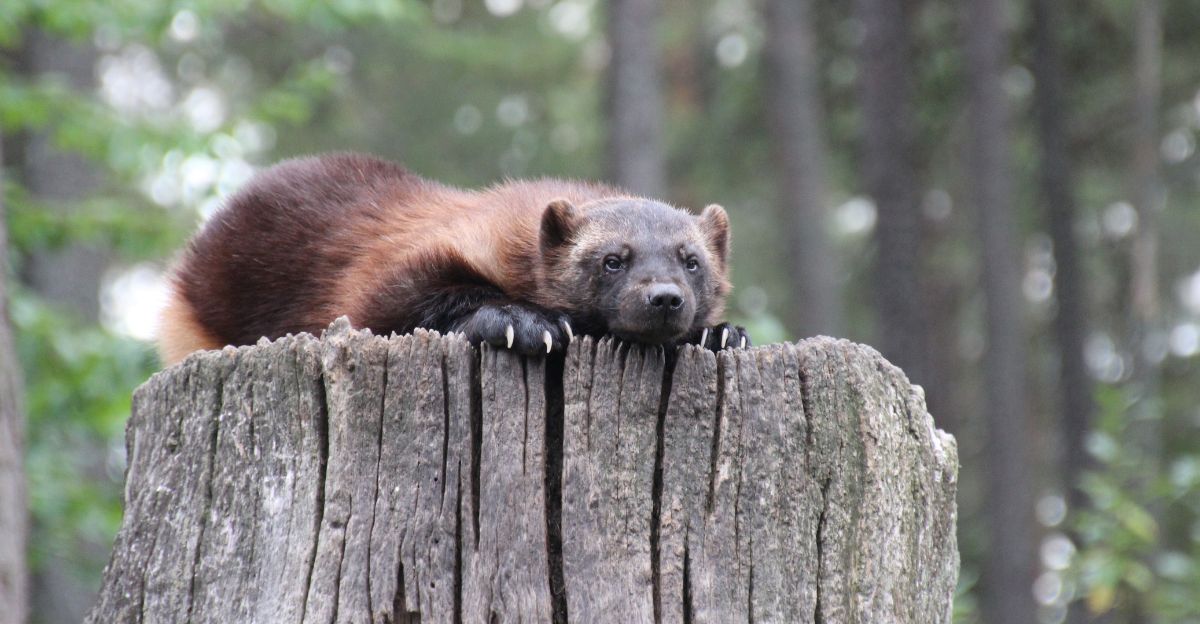
As the largest member of the weasel family, wolverines are compact but powerfully built, equipped with broad heads, muscular bodies, and long guard hairs that give them a shaggy appearance. Yellowstone’s wolverines inhabit high-elevation conifer forests and alpine tundra, utilizing these remote, rugged habitats to avoid disturbance and access their primary food sources.
Their thick fur and high metabolism perfectly suit the harsh, snowy climate. Wolverines often dig dens beneath log jams or uprooted trees in avalanche chutes to raise their young. They breed once a year and produce litters of two to four kits, which must survive the demanding mountain seasons.
19. Trumpeter Swan
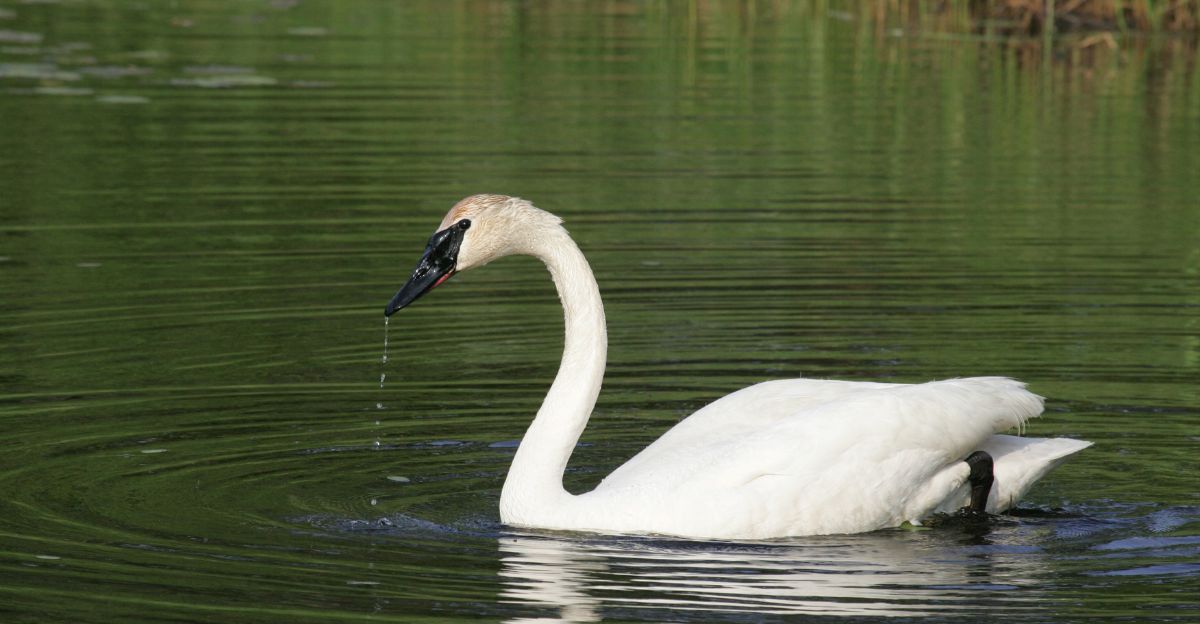
The trumpeter swan is a majestic and rare presence in Yellowstone National Park, recognized as North America’s largest native waterfowl, with adults weighing up to 30 pounds and displaying all-white plumage and a striking black bill. These impressive birds require open water and dense wetland vegetation for nesting, feeding mainly on aquatic plants and using their long necks to forage underwater.
In Yellowstone, the park’s swan population has steadily recovered through active reintroduction efforts, including the release of dozens of cygnets in recent years to augment breeding pairs.